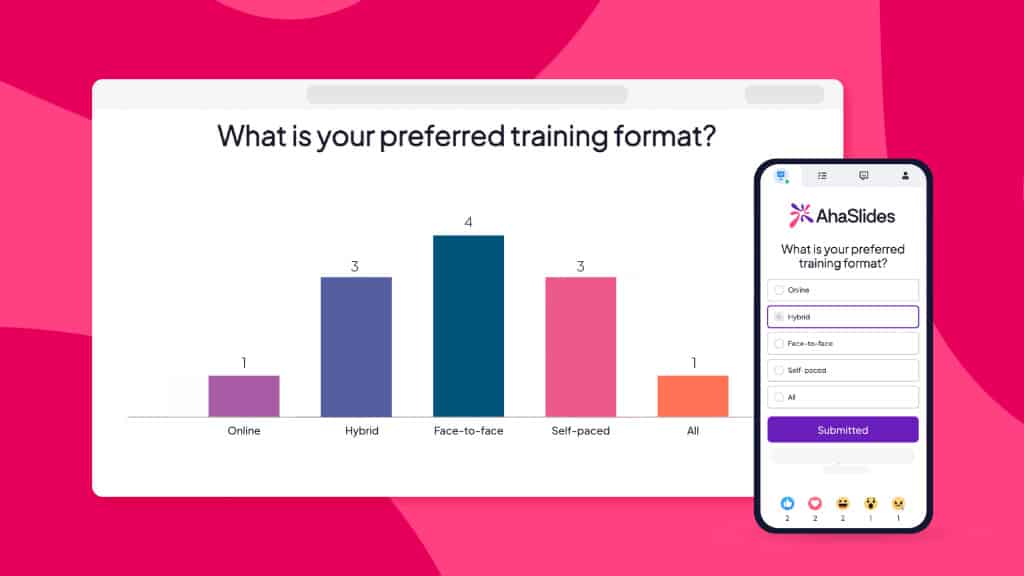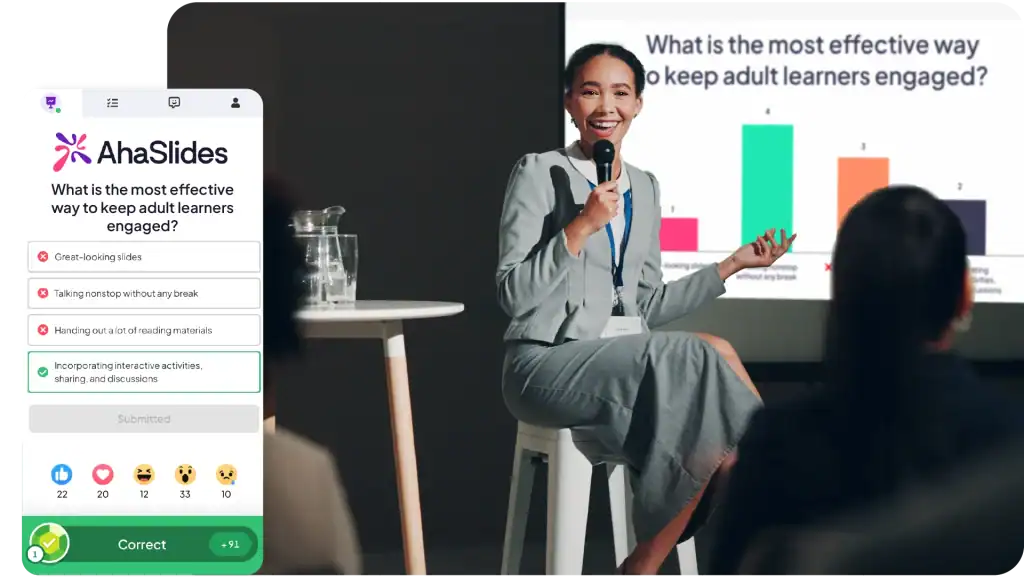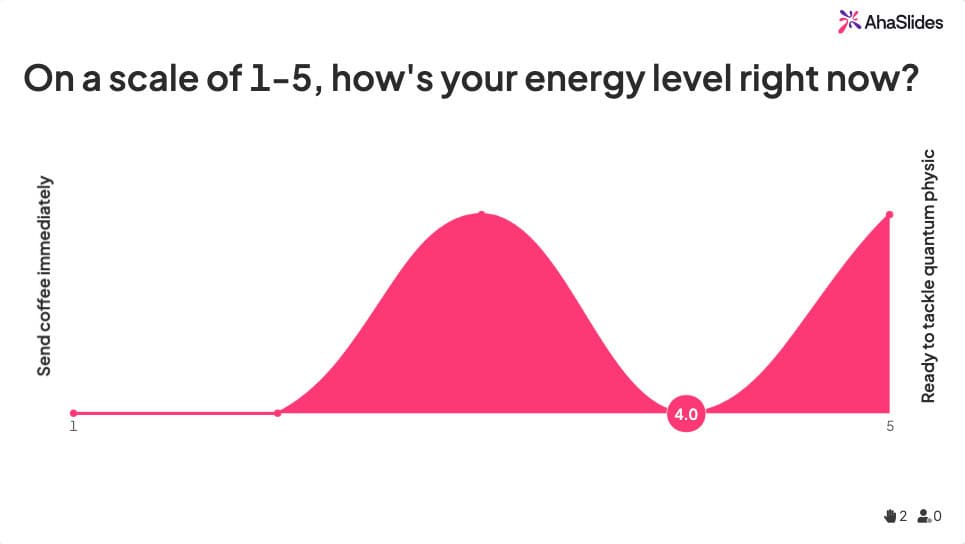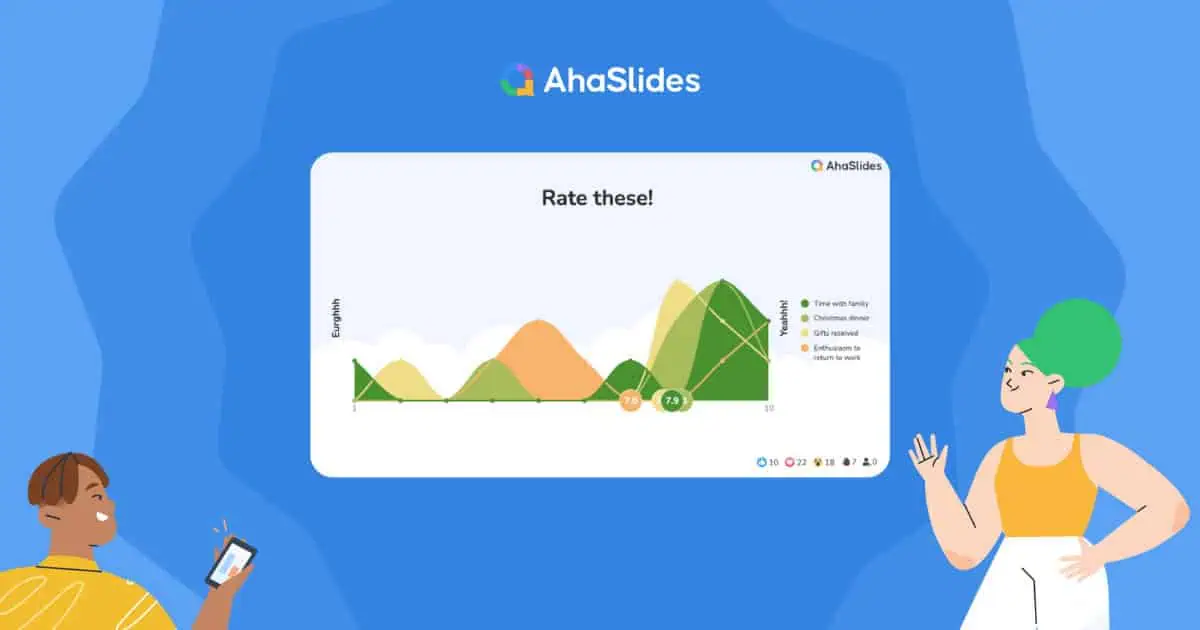N'ime akụ na ụba nlebara anya nke TikTok zụrụ azụ, ị nwere ihe dị ka sekọnd 8 iji jide mmasị mmadụ - obere oge karịa azụ̀ ọla edo. Ọ bụrụ na nke ahụ na-ada ụda maka ihe ngosi nkeji 5, nke a bụ ozi ọma: obere ngosi bụ ngwa nzuzo gị.
Ebe ndị ọzọ na-arịgo n'elu oche 60-slide na-ekiri anya na-egbuke egbuke, ị ga-ezipụ ozi lekwasịrị anya na-arapara. Ma ị na-etinye aka na ndị na-etinye ego, na-azụ ndị otu dịpụrụ adịpụ, na-eweta nchoputa nyocha, ma ọ bụ ịgba ajụjụ ọnụ maka ọrụ nrọ gị, ịmụta usoro nkeji 5 abụghị naanị adaba-ọ bụ nkọwa ọrụ.
Ntuziaka a na-adọta na sayensị ngosi, nghọta sitere n'aka ndị ọkachamara ọkachamara na-enye ọtụtụ narị nnọkọ kwa afọ, yana usoro egosipụtara site na ndị na-ekwu okwu TED iji nyere gị aka ịmepụta ihe ngosi na-etinye aka, kwenye, na ịhapụ mmetụta na-adịgide adịgide.
Tebulu ọdịnaya
Ihe kpatara ihe ngosi nkeji ise ji achọ ụzọ dị iche
Research Onye ọkà mmụta akwara ozi John Medina na-egosi na nlebara anya ndị na-ege ntị na-adaba nke ọma kwa nkeji iri n'oge ngosi ọdịnala. Na ntọala mebere, mpio ahụ na-adaba naanị nkeji 4. Ngosipụta nkeji 5 gị na-anọdụ nke ọma n'ime ebe njikọ aka a dị ụtọ - mana naanị ma ọ bụrụ na ị chepụta ya nke ọma.
Ihe ngosi dị mkpụmkpụ dị elu karịa. Okwu ọ bụla bara uru. Ihe slide ọ bụla dị mkpa. Enweghị oge maka ndochi, enweghị ụlọ maka tangents, yana enweghị nnabata maka ọgbaghara teknụzụ. Nnyocha ụlọ ọrụ na-egosi na 67% nke ndị ọkachamara ugbu a na-ahọrọ ihe ngosi dị nkenke, na-elekwasị anya karịa nke ogologo-ma ọtụtụ ndị na-eme ihe ngosi ka na-abịakwute okwu dị mkpirikpi dị ka nsụgharị condensed nke ogologo, nke na-adịghị arụ ọrụ.
Otu esi eme ihe ngosi nkeji ise
Kwụpụ 1: Họrọ isiokwu gị na nkenke ịwa ahụ

Nnukwu mmejọ ndị na-egosi na-eme? Na-agbalị ikpuchi oke ala. Ngosipụta nkeji ise gị kwesịrị ikwu okwu otu isi echiche— ọ bụghị atọ, ọbụnadị abụọ. Chee ya dị ka laser, ọ bụghị ìhè ide mmiri.
Isiokwu gị ga-agaferịrị ule akụkụ anọ a:
- Otu ebe ndoro anya: Ị nwere ike ịkọwa ya n'otu ahịrịokwu? Ọ bụrụ na ọ bụghị, belata ya.
- Mkpa ndị na-ege ntị: Ọ na-edozi nsogbu ha na-eche ihu? Mafere ozi ha maralarị.
- Ịdị mfe: Ị nwere ike ịkọwa ya na-enweghị mgbagwoju anya ndabere? Chekwaa isiokwu dị mgbagwoju anya maka usoro dị ogologo.
- Ọkachamara gị: Jidesie isiokwu ndị ị maara nke ọma. Oge nkwadebe dị oke.
Maka mkpali, tụlee isiokwu nkeji 5 ndị a egosipụtara n'okirikiri dị iche iche:
- Ntọala ọkachamara: Atụmatụ 3 data akwadoro iji belata ọgba aghara ndị ahịa, Kedu ka ngwaọrụ AI si emezigharị usoro ọrụ anyị, Gịnị kpatara nsonaazụ Q3 anyị ji egosi pivot dị mkpa.
- Ọzụzụ & L&D: Otu àgwà na-agbanwe arụmọrụ otu dịpụrụ adịpụ, Psychology n'azụ ọnụ ọgụgụ ndị ọrụ, Otu esi enye nzaghachi nke na-eme ka omume dịkwuo mma.
- Ọnọdụ agụmakwụkwọ: Isi ihe nchoputa sitere na nyocha nkwado m, Ka mgbasa ozi ọha na eze si emetụta mkpebi ndị ntorobịa, ụkpụrụ omume nke idezi mkpụrụ ndụ ihe nketa na ọnọdụ atọ n'ezie.
Kwụpụ 2: chepụta ihe mmịfe nke na-abawanye (anaghị adọpụ uche)
Nke a bụ eziokwu nke kewapụrụ onye na-amu amu na ndị na-eme ihe ngosi ọkachamara: ị bụ ihe ngosi, ọ bụghị ihe nkiri slide gị. Ihe mmịfe kwesịrị ịkwado akụkọ gị, ọ bụghị dochie ya.
Ajụjụ ọnụ slide
Nnyocha sitere n'aka ndị ọkachamara n'ihe ngosi na-atụ aro slide 5-7 maka okwu nkeji ise - ihe dịka otu slide kwa nkeji nwere oge maka mmeghe na mmechi gị. Agbanyeghị, ndị na-ekwu TED na-eji ihe mmịfe 20 na-aga n'ihu ngwa ngwa (sekọnd 10-15 ọ bụla) iji nọgide na-ahụ ike. Ihe dị mkpa karịa ọnụọgụ bụ idoanya na ebumnuche.
Ụkpụrụ imewe ọdịnaya
- Ederede kacha nta: Kachasị okwu 6 kwa slide. Ekwesịrị ikwu okwu ederede 700 gị, ọ bụghị igosipụta.
- Ọchịchị anya: Jiri nha, agba na oghere ọcha duzie uche gaa n'ihe kacha mkpa.
- Ọhụụ data: Otu ọnụ ọgụgụ na-adọrọ adọrọ ma ọ bụ eserese kwa slide na-akụ paragraf nke nkọwa.
- Nhazi agbanwe agbanwe: Otu mkpụrụedemede, agba, na okirikiri nhọrọ ukwuu na-ejigide nka.
Pro n'ọnụ: Mee ka ngosi gị nwee mmekọrịta site na iji ntuli aka dị ndụ, njirimara ajụjụ&A, ma ọ bụ ajụjụ ngwa ngwa. Nke a na-agbanwe ndị na-ekiri ihe na-adịghị mma ka ha bụrụ ndị na-arụsi ọrụ ike ma na-eme ka njide ozi dịkwuo mma. Ngwa dị ka AhaSlides hapụ gị ka itinye atụmatụ ndị a n'enweghị nsogbu, ọbụlagodi n'ụdị nkeji ise.

Kwụpụ 3: Jiri nkenke ndị agha mara oge ahụ
N'ihe ngosi nkeji 5, sekọnd ọ bụla nwere ọrụ. Enweghị ihe nchekwa maka ịgba ọsọ ma ọ bụ ịgbake site na mmejọ. Ndị ọkà okwu ọkachamara na-agbaso usoro a nwalere agha:
Usoro nke ekenye oge egosipụtara
- 0:00-0:30 - nko mmeghe: Jide n'uche na eziokwu na-atụ egwu, ajụjụ na-akpali akpali, ma ọ bụ akụkọ na-akpali akpali. Mafere ogologo okwu mmalite.
- 0: 30-1: 30 - Nsogbu: Chọpụta ihe mere ndị na-ege gị ntị ji kwesị ịma. Kedu ihe ịma aka ka isiokwu gị na-ekwu?
- 1: 30-4: 30 - Ngwọta / nghọta gị: Nke a bụ isi ọdịnaya gị. Nyefee isi isi 2-3 jiri ihe akaebe na-akwado ya. Bee ihe ọ bụla na-adịghị mkpa.
- 4: 30-5: 00 - Mmechi & oku na-eme ihe: Mee ka isi ozi gị sie ike ma gwa ndị na-ege ntị kpọmkwem ihe ha ga-eme na-esote.
Ndozi ihe ngosi mebere
Na-egosi na anya? Wulite oge itinye aka na nkeji anọ ọ bụla (kwa nyocha Medina). Jiri ntuli aka, jụọ maka nzaghachi nkata, ma ọ bụ jụọ ajụjụ ọnụ. Lelee akụkụ igwefoto gị (ọkwa anya), hụ na ọkụ siri ike n'ihu, wee nwalee ogo ọdịyo tupu oge eruo. Ndị na-ege ntị nke ọma na-adịkarị mfe ndọpụ uche, yabụ mmekọrịta abụghị nhọrọ - ọ dị mkpa.

Kwụpụ 4: Jiri ntụkwasị obi ziri ezi wepụta

Ọbụna ọdịnaya na-egbuke egbuke na-adaba adaba na nnyefe adịghị mma. Nke a bụ ka ndị ọkachamara si aga oge nke eziokwu:
Omume dị ka ọrụ gị dabere na ya (n'ihi na ọ nwere ike)
Megharịa ihe ngosi nkeji 5 gị ọbụlagodi ugboro 5-7. Jiri ngụ oge. Dekọọ onwe gị wee lelee ya azụ-ọ na-egbu mgbu mana ọ bara uru. Mụgharịa ruo mgbe ị nwere ike ịnye ọdịnaya gị n'onwe gị na-agụghị ihe mmịfe. Ebe nchekwa akwara na-ebu gị site na ụjọ.
Usoro nnyefe nke kewapụrụ ndị amateur na ndị na-eme ya uru
- Ụdị olu: Gbanwee ọsọ ọsọ, ụda olu na ụda olu. Kwụsịtụ n'usoro iji mesie ike—ịgbachi nkịtị dị ike.
- Asụsụ ahụ: N'ime mmadụ, jiri mmegharị ahụ mepere emepe wee jiri ebumnuche mee njem. Na igwefoto, kpachie mmegharị ahụ (ha na-ebuli elu) ma jikwaa anya na oghere anya.
- Akụkọ akụkọ: Kpaa n'ime nkenke, ihe atụ dabara adaba ma ọ bụ akụkọ ifo. Akụkọ na-akwalite njide site na 22x ma e jiri ya tụnyere eziokwu naanị.
- Njikwa ike: Dakọtara ike gị na ozi gị. Na-anụ ọkụ n'obi maka mkpali, tụrụ maka isiokwu ndị siri ike.
- Njikere nka nka: Nwalee akụrụngwa nkeji iri atọ n'oge. Nwee atụmatụ ndabere maka nsogbu njikọta.
Ihe nzuzo njikọ ndị na-ege ntị
Chee echiche banyere ihe ngosi gị dị ka mkparịta ụka, ọ bụghị arụmọrụ. Nọgide na-ahụ anya (ma ọ bụ lelee igwefoto maka ihe ngosi mebere). Nabata mmeghachi omume. Ọ bụrụ na ị sụọ ngọngọ, kwụsịtụ obere oge wee gaa n'ihu-ndị na-ege ntị na-agbaghara eziokwu, ma ọ bụghị nke ịgụ ihe slide site na robot.
Ndụmọdụ nzuzo: Amaghị ma ihe ngosi nkeji 5 gị na-enwe mmetụta? Jiri a ngwá ọrụ nzaghachi iji chịkọta mmetụta ndị na-ege ntị ozugbo. Ọ na-ewe obere mgbalị, ma ị na-ezere ịtụfu nzaghachi bara uru n'ụzọ.

Mmehie 5 na-emekarị mgbe ị na-enye ihe ngosi nkeji ise
Anyị na-emeri ma gbanwee site na nnwale na njehie, mana ọ dị mfe izere mmejọ rookie ma ọ bụrụ na ị maara ihe ha bụ👇
- Na-aga n'ihu n'oge: Amụma ndị na-ege ntị. Ọ na-egosi nkwadebe na-adịghị mma ma na-asọpụrụ usoro ihe omume ha. Mụta imecha na 4:45.
- Ihe mmịfe na-ebufe oke: Ihe mmịfe dị arọ ederede na-eme ka ndị na-ege ntị gụọ kama ige ntị. Ị na-atụfu uche ha ozugbo.
- Omume mwụpụ: "Ọ bụ naanị 5 nkeji" bụ echiche dị ize ndụ. Ụdị dị mkpụmkpụ na-achọkwu omume, ọ bụghị obere.
- Na-agbalị ikpuchi ihe niile: Omimi na-akụ obosara. Otu nghọta doro anya nke na-emeghachi omume dị mma karịa isi ihe ise ọ dịghị onye na-echeta.
- Na-eleghara ndị na-ege gị ntị anya: Hazie ọdịnaya dabere na mmasị ha, ọkwa ọmụma na mkpa ha. Ngosipụta izugbe anaghị ada.
Ọmụmaatụ ngosi nkeji 5
Mụọ ihe atụ ndị a ka ịhụ ụkpụrụ na-arụ ọrụ:
William Kamkwamba: 'Otu m siri mebie ifufe'
a TED Egwuregwu vidio na-egosi akụkọ William Kamkwamba, onye na-emepụta ihe sitere na Malawi bụ onye, dị ka nwata na-enwe ịda ogbenye, wuru igwe ikuku iji gbanye mmiri na ịmepụta ọkụ eletrik maka obodo ya. Akụkọ okike Kamkwamba kwụ ọtọ nwere ike masị ndị na-ege ntị, na ojiji o jiri obere nkwụsịtụ mee ka ndị mmadụ chịa ọchị bụkwa nnukwu usoro ọzọ.
Susan V. Fisk: 'Mkpa nke ịbụ nkenke'
a video ọzụzụ na-enye ndụmọdụ na-enye aka maka ndị ọkà mmụta sayensị ịhazi okwu ha ka ọ dabara na usoro ngosi “Nkeji ngwa ngwa” nke a kọwakwara na nkeji ise. Ọ bụrụ na ị na-eme atụmatụ imepụta ihe ngosi “Otu-esi” ngwa ngwa, lee ihe atụ a.
Jonathan Bell: 'Otu esi emepụta nnukwu aha aha'
Dị ka aha na-egosi, ọkà okwu Jonathan Bell ga-enye gị a kwụpụ-site-nzọụkwụ ndu na otu esi emepụta aha ika na-adịgide adịgide. Ọ na-erute kpọmkwem n'isi okwu ya na isiokwu ya wee kewaa ya n'ime obere akụkụ. Ezi ihe nlereanya a ga-amụta na ya.
Akwụkwọ ọnụahịa PACE: '5 min Pitch na Startupbootcamp'
Vidio a na-egosi otú Akwụkwọ ọnụahịa PACE, mmalite ọkachamara na nhazi ịkwụ ụgwọ ego ọtụtụ ego, nwere ike ịkọwa echiche ya nye ndị na-etinye ego n'ụzọ doro anya na nkenke.
Will Stephen: 'Otu esi ada ụda smart na okwu TEDx gị'
Iji usoro ihe ọchị na ihe okike. Ga-ekwu okwu Stephen TEDx na-eduzi ndị mmadụ site na nka izugbe nke ikwu okwu n'ihu ọha. Ihe kwesịrị nche iji chepụta ihe ngosi gị ka ọ bụrụ ọmarịcha nka.
Ị dịla njikere ịmepụta ihe ngosi na-etinye aka n'ezie? Malite na ngwa ngosipụta mmekọrịta AhaSlides ma gbanwee ihe ngosi nkeji 5 na-esote gị site na echefu echefu gaa na nke agaghị echefu echefu.








